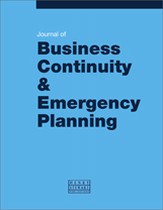The state of systemic threat surveillance in some Australian health organisations
Abstract
Crises are preceded by the emission of a series of early warning signals. If detected, these act like triggers for organisational action in anticipation of a known or unknown threat. It is vitally important to detect these signals to enable proactive, preventative actions that limit the impact of ensuing damage. The extent of threat surveillance (signal detection) in health organisations is an unknown, so a cross-sectional survey was conducted to assess the degree to which signal detection mechanisms are used. The focus of signal detection mechanisms and their degree of organisational integration was also assessed, as were organisational attitudes to whistle-blowers. Participants were executives in hospitals, medical centres, aged care homes, pharmacies, dental clinics and physiotherapy, chiropractic and podiatry practices. The results show that health organisations have inadequate signal detection mechanisms focusing on a limited selection of threats. Organisations often fail to integrate and disperse their mechanisms and focus almost entirely on internal signals. A majority of the surveyed organisations failed to reward bearers of bad news. In conclusion, the health organisations surveyed lacked systematic and systemic threat surveillance processes and mechanisms that are essential if they are to become better prepared for crises.
The full article is available to subscribers to the journal.
Citation
Canyon, Deon V. (2013, January 1). The state of systemic threat surveillance in some Australian health organisations. In the Journal of Business Continuity & Emergency Planning, Volume 6, Issue 2. https://doi.org/10.69554/ERPV2980.Publications LLP
